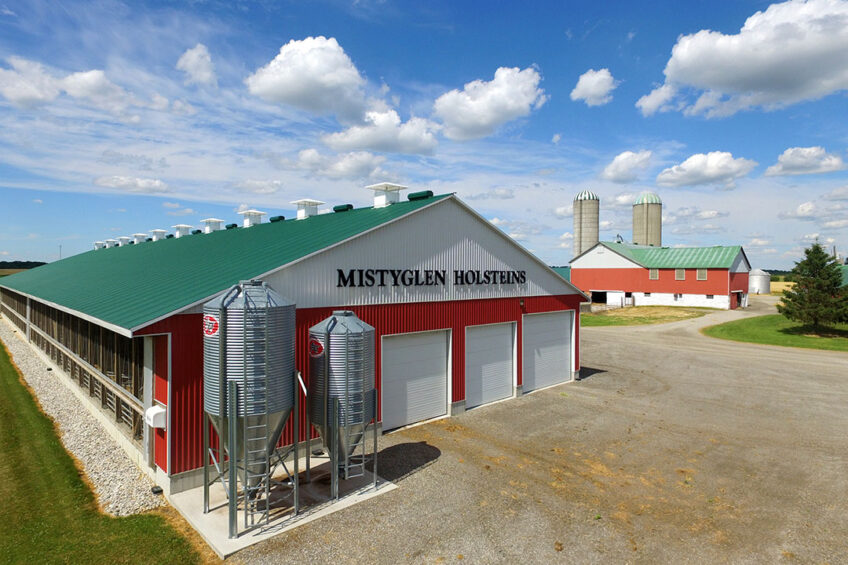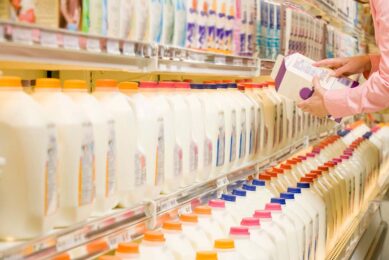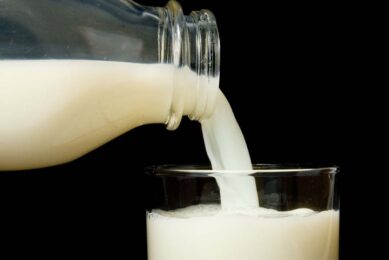Farm report, Canada: Leaving the supply management system

Milk processing on the farm is not so common in Canada as dairy farmers there have relied on the trusted supply management system to market their milk. However, that system has been heavily tested in recent years.
This has come as the government, controversially, has given away 20% of the dairy market in Canada to outside countries in trade agreements, prompting a move to more on-farm processing.
Seeking the chance to diversify and bring greater profit control to the farmer, the Pettit family have embarked on a new journey by starting to build their own on-farm creamery amid plans to increase their herd size in the future.
The brother and sister team of Tom and Suzanne Pettit own and run Mistyglen Holsteins based in southwest Ontario, Canada, near the city of London.

This is a fairly typical family dairy farm in the area but one with big ambitions. Suzanne says, “My father purchased this dairy farm in 1957, but the original Pettit homestead is next door and was founded in 1816 so our family has deep roots in this area.
“Our milking herd consists of 50 to 55 purebred Holsteins. They are milked approximately 3 times a day by a DeLaval V300 robot, and we strive to average 40kg of milk per cow per day at 4% butterfat and 3.3% protein.”
There has been a programme of renovation and modernisation over the past few years at Mistyglen, especially at the cow barns after a tornado hit the farm, causing a lot of damage.
 Farm: Mistyglen Holsteins is based in southwest Ontario, Canada, near the city of London. The farm and is currently ran and owned by Suzanne Pettit and her brother Tom (pictured). Tom’s wife Kris, and their 2 children, Maddie (15) and Kadie (13), also help out.
Farm: Mistyglen Holsteins is based in southwest Ontario, Canada, near the city of London. The farm and is currently ran and owned by Suzanne Pettit and her brother Tom (pictured). Tom’s wife Kris, and their 2 children, Maddie (15) and Kadie (13), also help out.
Mistyglen consists of 265 acres (107 ha) with around 50 – 55 pure bred holsteins in the herd.
Suzanne adds, “The milking cows are kept inside in a sand-bedded freestall barn. It is a single group, free traffic barn. We have approximately 100 head of young stock, which includes some beef crosses that we raise to sell locally.
“The calves start out in hutches, then move to group pens after weaning. The heifers have access to pasture during the spring, summer and fall periods but are then housed in a pack barn. We use 100% AI on all the animals here.”
Keeping up with new technology
“Back in 2012 we built a freestall barn and installed a used 2002 DeLaval VMS robot. 8 years later, in June 2020, that barn was hit by a tornado, and while rebuilding, the robot was replaced with a new DeLaval V300 unit,” she says.
Feed and labour are 2 of the main costs associated on any dairy farm but being modern-minded, Suzanne likes to keep up with new technology in a bid to run a more efficient farm.
“The cows are fed a TMR ration consisting mostly of corn silage and baleage grown on-farm, plus a mineral supplement and a 20% protein pellet through the robot,” she says.
The main problem within the Canadian dairy industry is ensuring the stability of our supply management system. We are at the mercy of our government during trade negotiations.”
“Our barn has many of the typical technologies available today such as automated curtains, scrapers, and manure pumps, to name a few. We keep our robot up to date with the latest available technology, including somatic cell and progesterone testing programmes.
“My brother and I provide the majority of the labour on the farm. Tom’s wife Kris, and their 2 children, Maddie (15) and Kadie (13), help out as well,” she said.
The Pettit family send their milk to the processor under 2 hours away and receive an average milk price of approximately 75 Canadian cents per litre (UK£0.43).

Building a creamery
However, in order to take a bigger share of the consumer price, Suzanne is forging ahead to build a creamery, or processing plant, on her farm, cutting out the middle man.
“This spring we begin the construction of Mistyglen Creamery. On-farm processing is not widely common in Canada because of the stability of the supply management system, but we feel it is an opportunity to diversify and provide local products to our community.
“We may eventually increase the herd to around 100 to 110 milking cows which will require 2 robots, but the development of the creamery is our number one priority at the moment,” says Suzanne.
Referring to that supply management system and other challenges Canadian dairy farmers face, Suzanne adds that the Covid-19 era has not affected them too much to date.

“The main problem within the Canadian dairy industry is ensuring the stability of our supply management system. We are at the mercy of our government during trade negotiations, and in recent years, more and more access to our markets have been given to other countries which could cause long term damage to the dairy community.
“The Covid-19 pandemic has had limited effect on the farm. There were slight quota fluctuations early on as the processors worked to divert the milk into the proper channels, but overall, we have seen little difference.”

“Some feeds and materials are more challenging to source and we have more stringent protocols to follow regarding disinfection and contact with the milk truck driver.
“Classification and DHI testing were delayed in some instances as well, but considering the circumstances, I believe the Canadian dairy industry and its partners reacted and adapted very well,” says Suzanne.
Join 13,000+ subscribers
Subscribe to our newsletter to stay updated about all the need-to-know content in the dairy sector, two times a week.
 Beheer
Beheer









 WP Admin
WP Admin  Bewerk bericht
Bewerk bericht